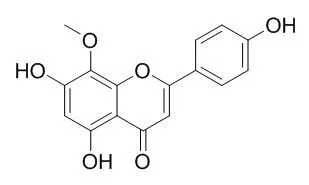Scutellaria barbata D. Don is widely used as a folk antitumor and anti-inflammatory agent in Asia. However, a simple and global quality control method for S. barbata was lacking. In this study, six phenolic compounds, including P-coumaric acid, scutellarin, apigenin 5-O-β-glucopyranoside, luteolin, apigenin and 4'-Hydroxywogonin were obtained from S. barbata by phytochemical investigations.
METHODS AND RESULTS:
The six compounds plus baicalein show cytotoxcities to the nine human cancer cells, K562, MGC-803, HL60, SH-SY5Y, SW1116, SMMC-7221, SW480, HepG2 and KB. Subsequently, a high-performance liquid chromatography with photodiode array detector (HPLC-DAD) was developed for both fingerprint analysis of S. barbata and quantitative determination of the seven anticancer active compounds in S. barbata. The chromatographic separation was accomplished on an Ultimate™ XB-C18 column (4.6 x 250 mm, 5 µm) in 65 min. For fingerprinting, 26 common peaks were found and selected as characteristic peaks to assess the consistency of S. barbata samples. For quantitative analysis, the seven bioactive compounds showed good regression relationship ( R² > 0.999) within test ranges and the recovery of the method was in the range of 90-105 %.
CONCLUSIONS:
In brief, the present study provides the fingerprint analysis and quantitative methods for global and systematical quality control of S. barbata for its anticancer usage. |






 Cell. 2018 Jan 11;172(1-2):249-261.e12. doi: 10.1016/j.cell.2017.12.019.IF=36.216(2019)
Cell. 2018 Jan 11;172(1-2):249-261.e12. doi: 10.1016/j.cell.2017.12.019.IF=36.216(2019) Cell Metab. 2020 Mar 3;31(3):534-548.e5. doi: 10.1016/j.cmet.2020.01.002.IF=22.415(2019)
Cell Metab. 2020 Mar 3;31(3):534-548.e5. doi: 10.1016/j.cmet.2020.01.002.IF=22.415(2019) Mol Cell. 2017 Nov 16;68(4):673-685.e6. doi: 10.1016/j.molcel.2017.10.022.IF=14.548(2019)
Mol Cell. 2017 Nov 16;68(4):673-685.e6. doi: 10.1016/j.molcel.2017.10.022.IF=14.548(2019)